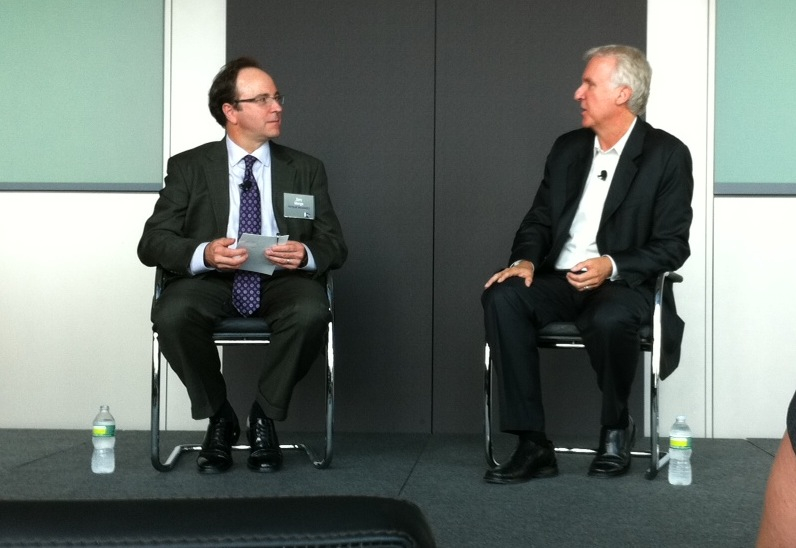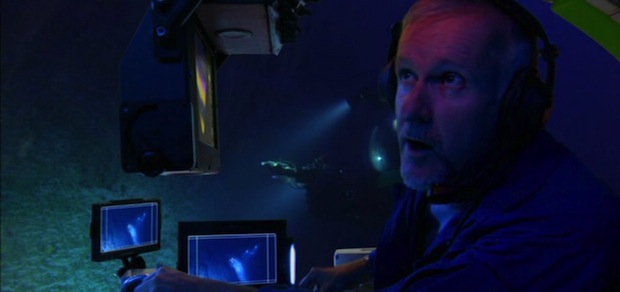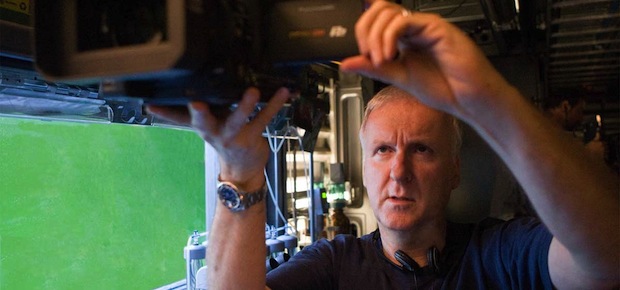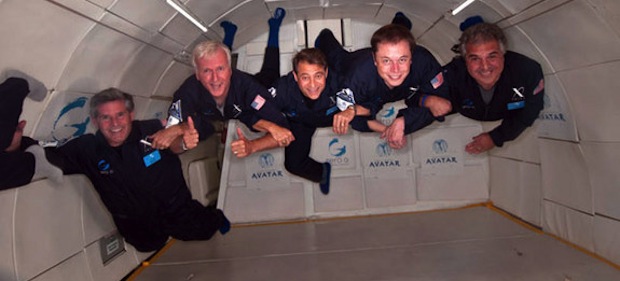
 Having directed the two highest grossing films of all time (Titanic and Avatar), James Cameron can pretty much do whatever the heck he wants—and he does, thankfully.
Having directed the two highest grossing films of all time (Titanic and Avatar), James Cameron can pretty much do whatever the heck he wants—and he does, thankfully.
Besides being a cinematic storyteller, Cameron is an innovator, bringing together scientists, engineers and an assortment of other incredibly bright people to use their forward-thinking skills to change the scientific landscape. Camera tech, oceanic exploration, space travel—he loves knowledge and discovery, and the quest informs his films.
I sat in on a conversation between Cameron and Popular Mechanics Editor-in-Chief James Meigs, leading up to the director’s appearance at the Pop Mech 2011 Breakthrough Awards, and was once again enamored by the man’s pursuits (I tweeted from the audience that every time Cameron gives his 3D sales pitch I’m re-sold on it as the future of moves). Here are five highlights from the discussion:
1. Cameron Is Building a Submarine to Take Him to the Bottom of the Ocean

According to the avid diver (who’s produced marine li-centric 3D films like Aliens of the Deep and Sanctum), he’s currently helping to produce a submarine capable of navigating the deepest points of the ocean, including the South Pacific’s Tonga Trench. To put it into perspective, a dinky bubble sub can travel 1,000 ft. More advanced subs dive to 5,000 ft., the depth of 97/98% of the ocean. Apparently, Cameron’s spiffy new ship will be capable of withstanding the pressure down 36,000 ft, enabling him to travel to the 2%, a dark chasm cracked open by moving tectonic plates that no human has been previously capable of entering.
Cameron assured the audience: once he goes down there, he will discover new species. That’s confidence.
2. In Its Infancy, Avatar Was Physically Impossible to Make
![]()
Cameron wrote the first Avatar in 1995, but when he brought it to his special effects company, they told him the technology didn’t exist to make the film. That’s serious forward thinking—but eventually, after watching motion capture and CG character effects improve, the team was finally ready to embark on their journey to Pandora.
Well, not exactly. When Avatar officially went into development, the technology still wasn’t ready, but the end date gave Cameron and his team of artists enough time to simultaneously design the film and invent the technology that would allow them to pull it off. Cameron explained that he comes into every meeting with an arsenal of “yeah, but’s,” a knowledge and trust in his team to know when to agree with them and when to ignore and push forward.
3. Cameron Still Loves 3D

Box office numbers for 3D films may be waning, but Cameron is still a believer that it’s the way we’re meant to see films. He even thinks we’re hardwired for it, citing studies where stereoscopic 3D images have registered in a person’s memories more often than 2D. Cameron’s goal is to have audiences watching moves they way they perceive the world, with multiple dimensions and depth. He started experimenting with 3D back in 2002 by “smashing” two HD cameras together and fusing them together in a computer. His camera technology has only advanced from there, but Cameron realizes the “wearing glasses” thing is a barrier for people and is still striving to improve the experience.
4. Cameron Is Pissed About the Cancellation of the Space Shuttle Program

“We’re coming up on the 40th anniversary of going nowhere fast.”
James Cameron obviously knows a thing or two about the history and business of space travel, letting off a little steam at his unhappiness towards the world’s attitude towards space exploration. After comparing the shuttle program to Christopher Columbus spending a few decades wading in the water before his cross-Atlantic travel (you know, to get used to how the boat works), he twisted the knife once more, citing the costliness of the shuttles in comparison to the old Saturn V rockets. Diss!
Cameron also mentioned his original plans to bring 3D cameras to space to film a movie, even going through Russian cosmonaut training to prepare. It didn’t happen, but he would consider traveling out of orbit, “but only to make a film.”
5. Avatar 2 and 3 will Continue to Push Technological limits, While Remaining Thematically Consistent.
![]()
Everyone was curious to know about the follow up to Cameron’s mega-successful sci-fi movie—but details were scarce. While the tech is an important aspect of his filmmaking, he does believe the movies are about humanity’s interconnectedness about nature (as opposed to simply being a soapbox for environmental issues) and the second movie will echo that sentiment.
Of course, with Avatar being so revolutionary in its integration of 3D, I had to ask him about pushing the envelope with the sequels and Cameron revealed that the next step is all about frame rates. While not as romantic a topic as 3D, Cameron explained that upping the frames per second of normal films (24) to what he plans for Avatar 2 (60) will allow for even more realistic effects and movement. Shooting 3D creates limitations, but this should allow for even more crazy Pandora action. The only drawback is cost—because of the effects, one 3D frame of Avatar took 200 hours to render. That means one second of the sequel’s footage would round out at about 12,000 hours. Time is money!
When asked about “4D,” Cameron chuckled and admitted that there was an actual 4D Avatar that played n Seoul, Korea, utilizing motion-enabled seats to make the viewer part of the ride. And you thought Cameron was the innovator.


